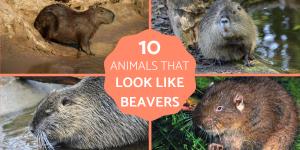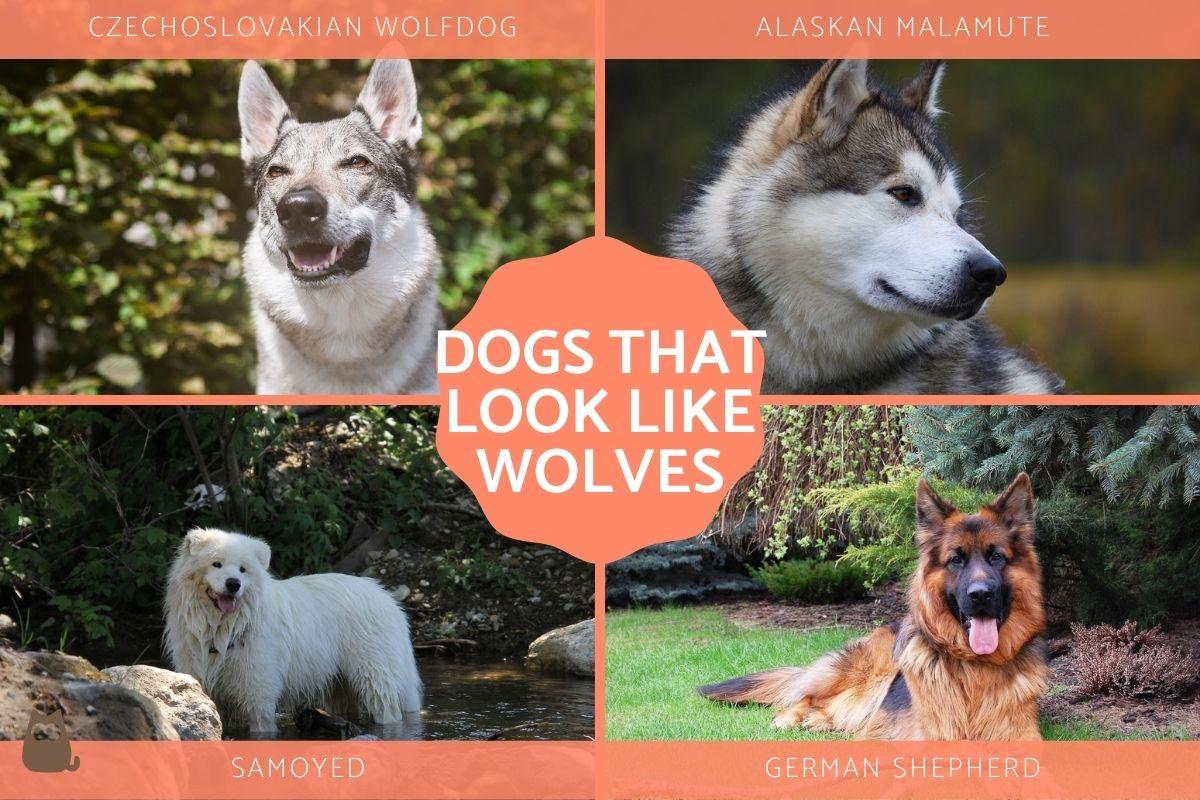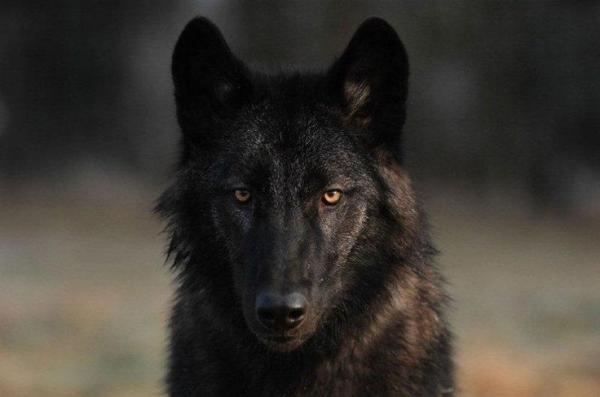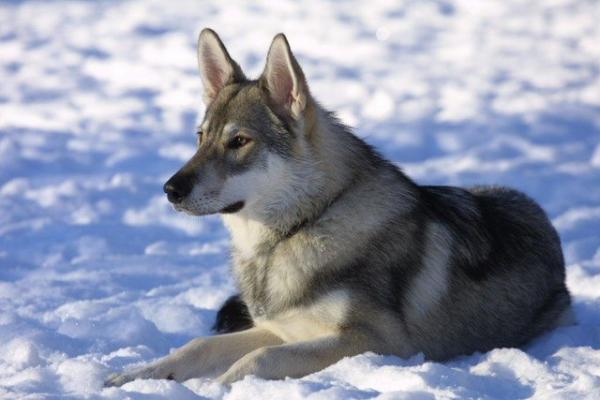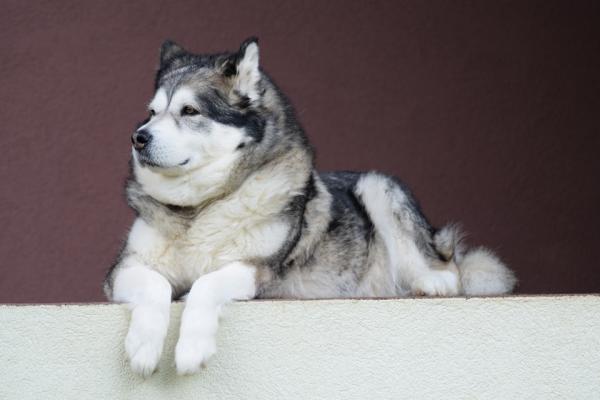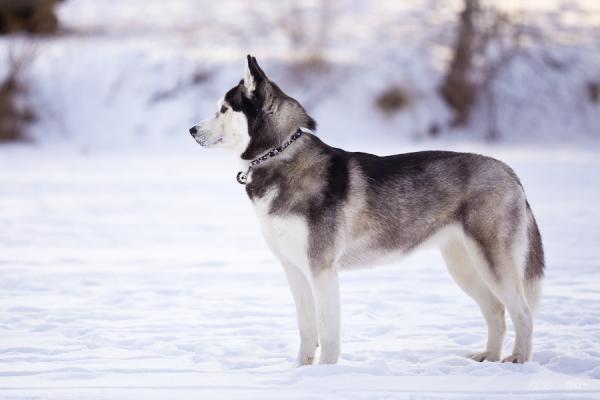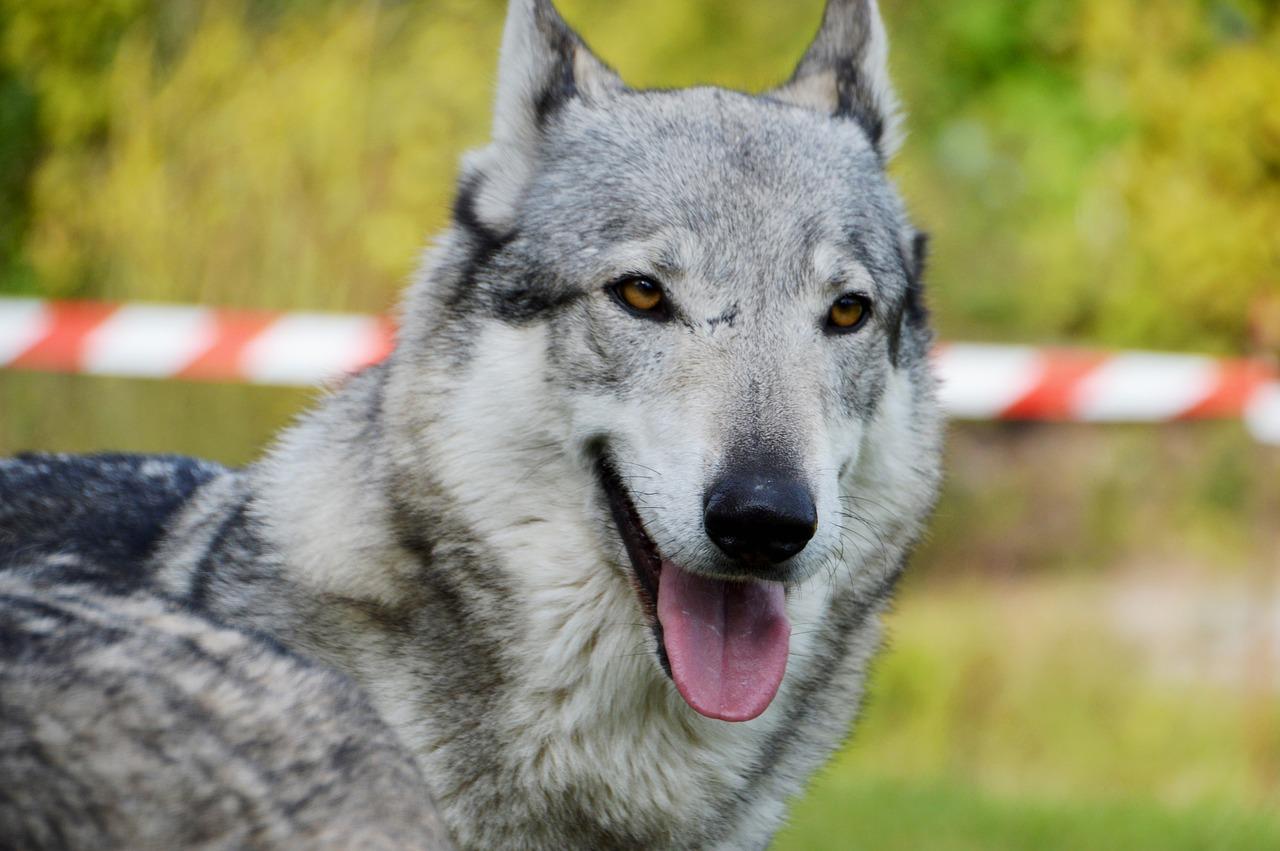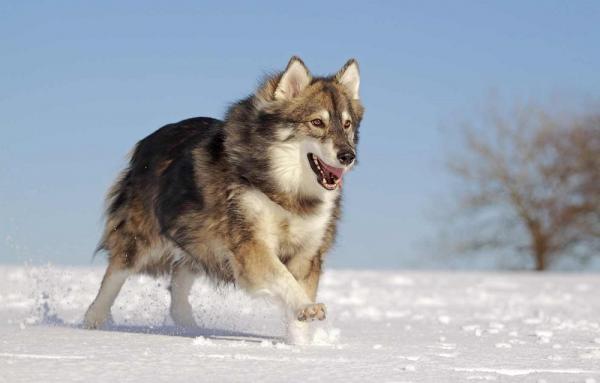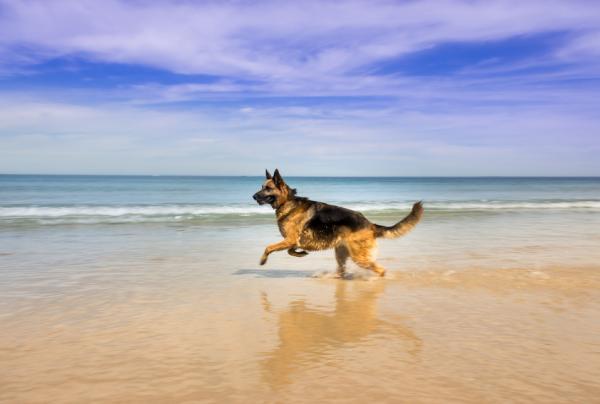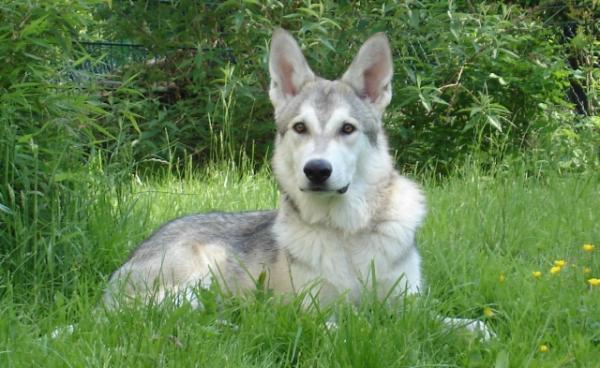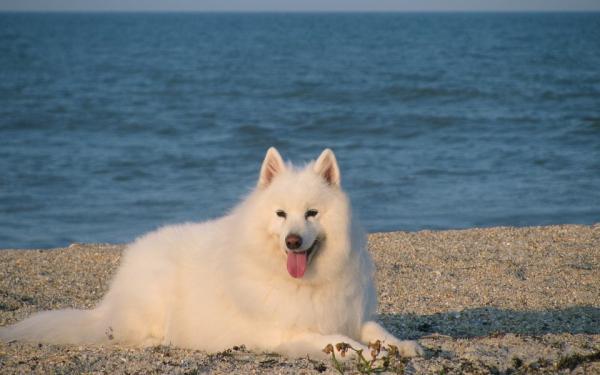Dog Breeds That Look like Wolves

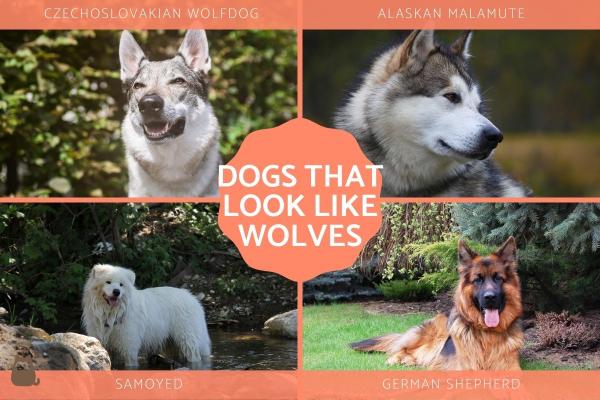
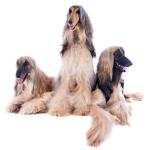
See files for Dogs
While it is true that all dogs derive from wolves, recent research suggests they share a common ancestor from which they both diverged millions of years ago. This is what emerged into the genus Canis which contains wolves, dogs and other animals. For this reason, it is not surprising that many dogs look like wolves. However, the intensive and selective breeding of canines by humans means many dog breeds barely resemble the wolf at all. Some dog breeds are genetically more closely linked than others, but this does not always mean they look like wolves in terms of physical features.
At AnimalWised, we share our list of the top 21 dog breeds that look like wolves. We explain a little about the genetic links between these animals and provide photos so you can see the similarities for yourself.
- Wolfdog
- Northern Inuit Dog
- Alaskan Malamute
- Siberian Husky
- Czechoslovakian Wolfdog
- Canadian Inuit Dog
- Utonagan
- German Shepherd
- Saarloos wolfdog
- Samoyed
- Other wolf-like dog breeds
1. Wolfdog
The wolfdog is a hybrid of a wolf and a dog. This is the ultimate wolf-like dog breed, the result of breeders making crosses between these species in diverse areas of the world. This has resulted in different genetic loads, depending on how much wolf DNA is present. For wolfdogs, this has led to the establishment of three levels of genetic load:
- LC: genetic level between 1% and 49%.
- MC: genetic level between 50% and 75%.
- HC: genetic level higher than 75%.
There is a debate among experts whether or not to consider the wolfdog a hybrid dog. In many countries, their possession is prohibited. This animal has a physical similarity with the wolf, as well as their high genetic load. They also have behavioral characteristics similar to wolves, making them often difficult to train.
In the United States it is estimated that there are between 300,000 and 500,000 wolfdogs as pets. However, there is also much fraudulent breeding, so there are many individual dogs which merely resemble wolves physically. There are states that limit their genetic load to try to reduce potential behavioral problems in the dog, such as aggression.
Genuine wolfdogs are incredibly healthy animals. Their behavior tends to resemble wolves more, than dogs. They tend to grunt or howl instead of bark. This means they need to be cared for by experienced guardians and they generally do not fare well in built-up communities.
For more information, take a look at our related article on whether it is legal to own a wolfdog.
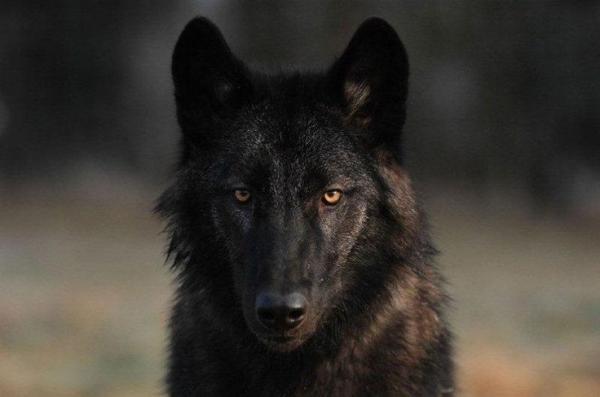
2. Northern Inuit Dog
The Northern Inuit Dog, also known as the Tamaskan, is a true wolfdog. Some of breeders cross this breed in a family environment to better socialize the specimens. According to breeders these animals are very long-lived given their refined genetics. They suggest the average life of a Tamaskan is between15 and 20 years.
The origin of the genuine Northern Inuit Dog comes from Finland, providing the first specimens of a cross between the Siberian Husky and Alaskan Malamute. Later some breeders have increased lupoid genetics (wolf genes) of the dog in later generations.
The appearance of the Tamaskan is imposing, given their enormous wolf-like appearance. They measure between 23 and 28" at the withers. Their weight varies between 55 and 88 lb. Females are smaller than the males. They are originally considered a working dog and used to pull sleds.
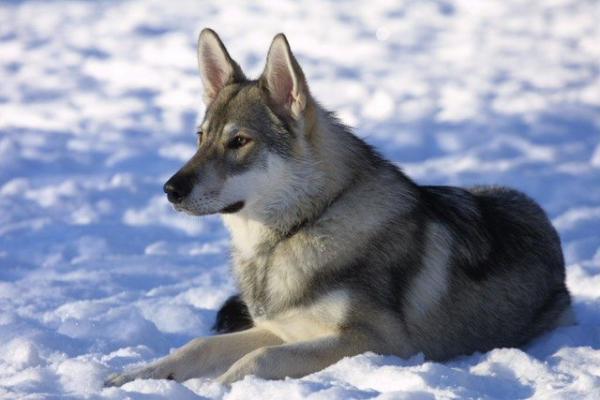
3. Alaskan Malamute
The Alaskan malamute is an ancient canine breed that was developed by Inuit peoples as a sled dog. They are extraordinarily strong animals, as they can carry up to 50 lb of weight for many miles (practically half their own weight).
Males measure up to 25" at the withers and females measure up to 23". Their life expectancy is around 10 to 12 years. Alaskan malamute hair is very special and requires specific care. Curiously when it gets wet it does not lose volume. The Alaskan malamute bears a spectacular wolfish appearance, but is a beloved companion animal with a particularly loving disposition. Surprisingly, they can fare well even in warm climates.
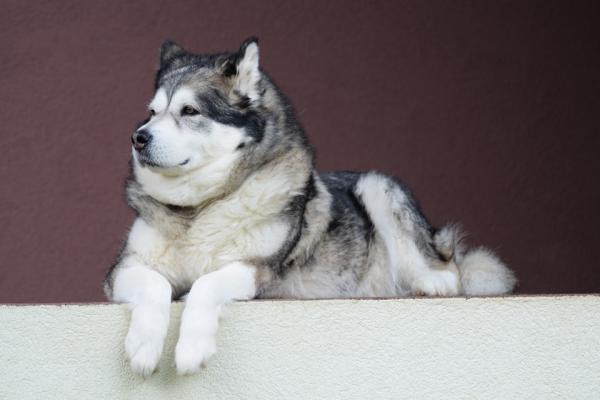
4. Siberian Husky
The Siberian husky is a large dog, but smaller than the Alaskan malamute. They can weigh up to 60 lb and have a life expectancy of 12 to 15 years. Their appearance is at once both fierce and loving. Although they resemble a wolf, they are very playful, affectionate and loyal dogs.
They are gregarious dogs and used to a herd. They cannot stand solitude well. Although they can be trained to pull sleds, they are also known for stubbornness and can be difficult to train. They are very affectionate, active and cordial dogs, in need of a good dose of daily exercise.
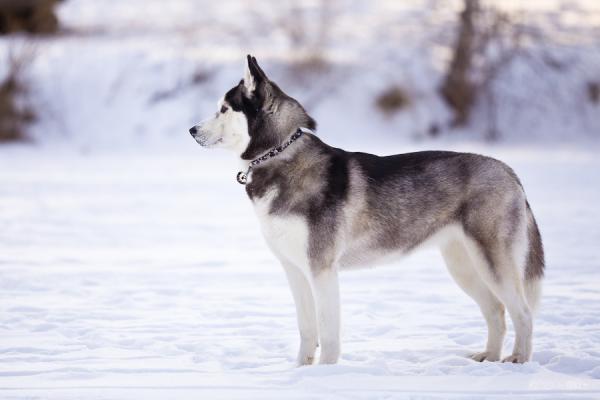
5. Czechoslovakian Wolfdog
The Czechoslovakian wolfdog is the result of an experiment carried out in 1955. A German Shepherd was crossed with four Carpathian wolves. Despite their wild-wolf ancestry, after several generations of breeding they are a relatively well-balanced wolfdog. The result is that different hybrid wolf-like dogs have been bred since then, with varying success.
These dogs should socialize properly with people and other pets from a very young age. The breed was established officially until 1982, when the Czechoslovakian wolfhound was recognized as a national symbol of the former Czechoslovak Republic. If they do not socialize properly they tend to be shy and distrustful, with potential aggressive reactions. They are very hierarchical and can be problematic with smaller pets.
Their life expectancy is between 13 and 16 years. However, they are prone to hip dysplasia in dogs due to German Shepherd genetics. They are large in size, as they measure up to 26" in males and weigh over 65 lb.
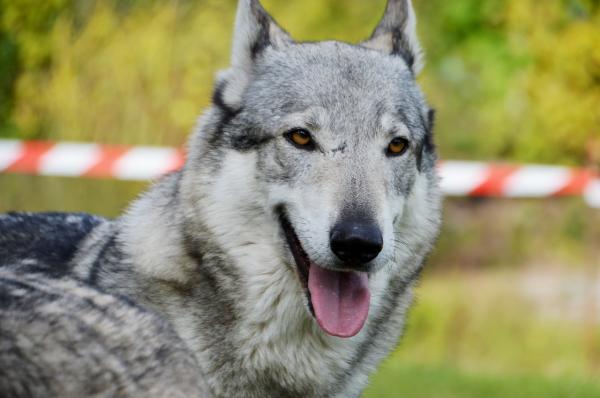
6. Canadian Inuit Dog
The Canadian Inuit Dog, also known as the Canadian Eskimo Dog or qimmiq, is a large dog that Inuit tribes have used to pull their sleds. It is considered the oldest canine breed in North America. They are very wolflike in appearance, although they have a slightly stubbier snout.
This breed is in decline due to the modern use of snowmobiles in the Arctic. Their populations are also being reduced due to replacement by Alaskan Malamute and Siberian Husky breeds. While the latter breeds are faster, they also tend to be less resistant.
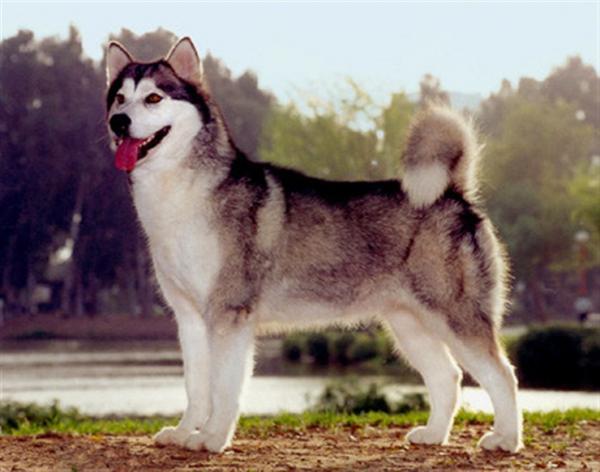
7. Utonagan
The Utonagan is an impressive dog of British origin. It is a hybrid between 3 breeds:
- Alaskan Malamute
- German Shepherd
- Siberian Husky
They are intelligent, friendly, gentle and sociable dogs. Their life expectancy is 10 to 15 years. They get along well with children and are congenial with other pets. They are not yet recognized as a breed by any official body, making them an unofficial wolf-like dog. Females are generally smaller than males. Some consider them a
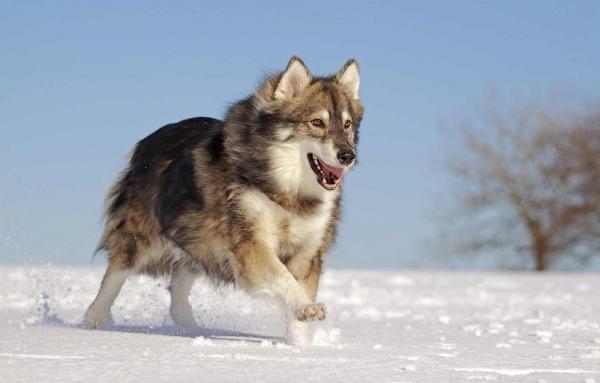
8. German Shepherd
The German Shepherd is possibly the most common dog breed that looks like a wolf. Due to their intelligence, strength, constancy, obedience and disposition, the genetic lines of working German Shepherds are among the most frequently used by firefighters and world order forces.
The life expectancy of the German shepherd is 9 to 13 years. They have great attachment to their family, and especially to children. They make very good guardians, but they are prone to certain health problems. Many of these are related to bone structure which often deteriorates due to a limited gene pool. See more with our article on the common health problems of German Shepherds.
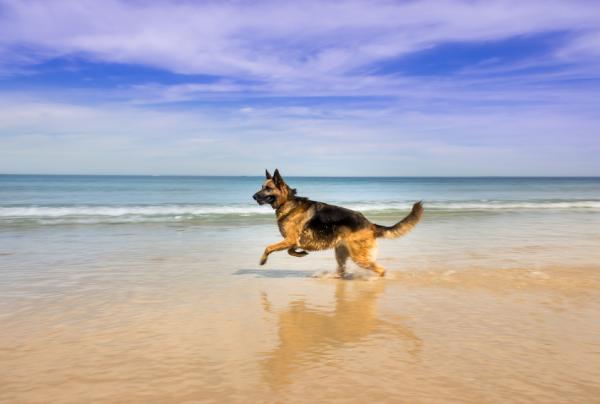
9. Saarloos wolfdog
The Saarloos wolfdog is an imposing dog. This is due to their breeding history. In the 1930s, a Dutch breeder decided German Shepherds were becoming too domesticated and wanted to breed back some wolf DNA in their lineage. The result is the Saarloos wolfdog. It wasn't until 1975 this breed was officially recognized by breed standards agencies.
Physically, the legs of the Saarloos wolfdog are very long and their coat is short. They are vivacious dogs, curious, confident and independent. They possess a very strong physique and need regular access to the outdoors. They are not suitable for inexperienced dog guardians.
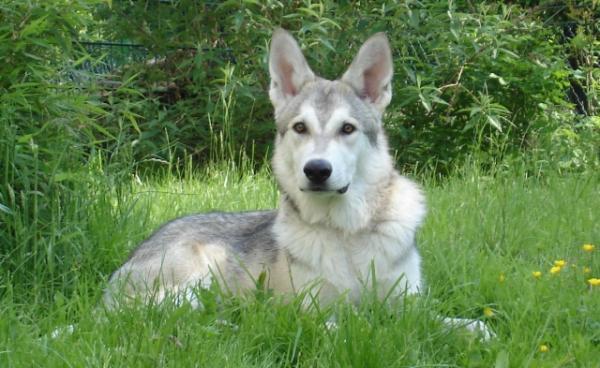
10. Samoyed
The Samoyed is a dog of Russian origin. The original function of the Samoyed dogs was for reindeer herding, pulling the sleds and keeping their caretakers warm at night as they slept beside them. Although the Samoyed looks like a white wolf, especially in their facial structure, they are one of the most loving dog breeds in the world.
The Samoyed is noted for their bug fluffy coat which requires regular brushing to condition and remove dead hair. They are poor guard dogs due to their affable temperament, but they can be suitable when used as a watchdog as they are very alert. Samoyeds, sometimes referred to as ‘Sammies’ have a tendency to smile which makes them all the more loveable.
Although wild wolves can be fierce creatures, they are also beautiful and fascinating animals in their own right. Find out some of this fascination for yourself in our article on the different types of wolves and their characteristics.

Other wolf-like dog breeds
While we have provided information on some of the dogs that most look like wolves, you might be interested in these other wolf-like dog breeds:
- Sarloos Wolfdog
- Alaskan Malamute
- Greenland Dog
- Belgian Tervuren
- East Siberian Laika
- West Siberian Laika
- Scottish Deerhound
- Irish Wolfhound
- Lupo Italiano
- Finnish Lapphund
- Kugsha
Some of these dogs may also resemble other canids such as the North American coyote. Learn more with our article on the difference between wolves and coyotes.
If you want to read similar articles to Dog Breeds That Look like Wolves, we recommend you visit our Facts about the animal kingdom category.



